Want to know more about the Best Journalism Schools In the US and make an informed decision? Here is a good place to start.
Navigating the sea of journalism schools can be overwhelming, leaving aspiring journalists adrift.
In this blog post, we’ll tackle this problem by shining a spotlight on the best journalism schools.
We will guide you toward the ideal institution to hone your skills and ignite your career. Let’s dive in!
Please note that schools are selected based on our criteria (at the end of the article), ranked by the latest acceptance rate.
Table of Contents
#25. University of Illinois at Urbana-Champaign


- Acceptance rate: 60%
- Average entry score: 1210-1470 SAT or 27-33 ACT
- Student-to-faculty ratio: 21 to 1
- Estimated cost of attendance (tuition and fees): $33,060-$50,510
- Average earning potential for graduates: $38,100 (College Simply)
The University of Illinois at Urbana-Champaign shapes journalists through its prestigious programs. Students gain hands-on experience with state-of-the-art facilities, engage in experiential learning opportunities, and are mentored by accomplished faculty.
The curriculum emphasizes storytelling, ethics, and critical thinking while embracing emerging technologies. Internships and networking events connect students with industry professionals.
This fosters their growth and prepares them for successful careers in journalism and media-related fields.
Source: University of Illinois at Urbana-Champaign
What’s it like to study at the University of Illinois at Urbana-Champaign?
#24. University of Wisconsin Madison


- Acceptance rate: 53%
- Average entry score: 1300-1480 SAT or 28-32 ACT
- Student-to-faculty ratio: 18 to 1
- Estimated cost of attendance (tuition and fees): $27,484-$55,372
- Average earning potential for graduates: $32,800 (College Simply)
At UW-Madison, the Journalism and Mass Communication programs are the talk of the town. They’re the perfect blend of education and entertainment, with a curriculum that’s sharper than a journalist’s pencil.
Undergraduate journalism students get hands-on experience that’s more exciting than breaking news, all while learning from faculty that’s cooler than a cucumber in a heatwave.
With specializations ranging from strategic communication to media analytics, the possibilities are endless. It’s a journalism degree program that’s as cutting-edge as a viral tweet and as informative as a front-page article.
Source: UW-Madison
#23. University of Florida
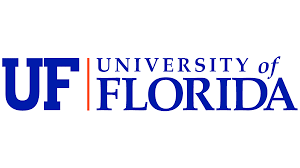

- Acceptance rate: 42%
- Average entry score: 1300-1470 SAT or 29-33 ACT
- Student-to-faculty ratio: 18 to 1
- Estimated cost of attendance (tuition and fees): $21,430-$43,708
- Average earning potential for graduates: $50,900 (College Simply)
The University of Florida offers a variety of journalism and communications programs. These cover a range of topics, such as digital media, public relations, advertising, and journalism ethics.
Students have access to a state-of-the-art newsroom, broadcast studios, and a variety of research centers. Graduates have gone on to successful careers in media, government, and non-profit organizations.
Source: UF Catalog
#22. University of Texas at Austin
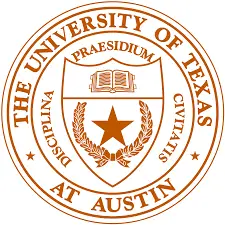

- Acceptance rate: 32%
- Average entry score: 1230-1500 SAT or 29-34 ACT
- Student-to-faculty ratio: 16 to 1
- Estimated cost of attendance (tuition and fees): $28,928-$57,512
- Average earning potential for graduates: $34,000 (College Simply)
The journalism programs at the University of Texas at Austin offer a collaborative learning environment that mimics the professional world.
With small class sizes, hands-on experiences, and a diverse student body, students are encouraged to explore all aspects of journalism.
The university also offers opportunities for students to work with award-winning faculty and gain practical experience through internships and student media organizations.
Source: School of Journalism and Media
Similar articles like this:
- 25 Best Schools For Soil Sciences In The US
- 25 Best Art History Schools In The US
- 25 Best Schools For Aerospace Engineering In The US
#21. University of California, Santa Barbara


- Acceptance rate: 29%
- Average entry score: 26-31 ACT
- Student-to-faculty ratio: 17 to 1
- Estimated cost of attendance (tuition and fees): $37,415-$67,169
- Average earning potential for graduates: $36,300 (College Simply)
The University of California Santa Barbara (UCSB) offers a Bachelor of Arts degree in Communication with an emphasis on Journalism and Media Studies.
Their program’s curriculum provides students with a strong foundation in journalistic writing, multimedia storytelling, and media analysis. Students have the opportunity to work for the student-run newspaper and other campus media outlets.
The program also offers journalism-related internships and study-abroad opportunities. UCSB’s journalism program is highly respected and prepares students for careers in various media industries.
Source: UC Santa Barbara
What’s it like to study at the University of California Santa Barbara?
#20. University of California, Irvine
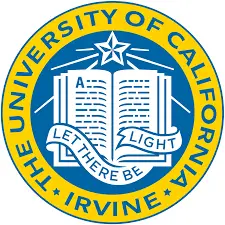

- Acceptance rate: 29%
- Average entry score: 1230-1430 SAT or 26-33 ACT
- Student-to-faculty ratio: 18 to 1
- Estimated cost of attendance (tuition and fees): $34,161-$63,915
- Average earning potential for graduates: $27,500 (College Simply)
At UCI, journalism courses are led by a diverse and accomplished faculty, boasting Pulitzer Prize winners, renowned investigative journalists, and media scholars.
Students receive personalized instruction, learning the latest techniques in multimedia storytelling, investigative reporting, and digital journalism.
Faculty members emphasize critical thinking, ethical reporting, and effective communication skills, preparing graduates for success in journalism, broadcasting, and media-related fields.
UCI’s journalism program truly stands out for the expertise and dedication of its faculty.
Source: UCI School of Humanities
#19. University of North Carolina at Chapel Hill


- Acceptance rate: 25%
- Average entry score: 1310-1500 SAT or 29-33 ACT
- Student-to-faculty ratio: 13 to 1
- Estimated cost of attendance (tuition and fees): $24,546-$51,725
- Average earning potential for graduates: $33,900 (College Simply)
Offering a range of journalism programs, the University of North Carolina at Chapel Hill’s School of Media and Journalism prepares students for successful careers in the field.
UNC-Chapel Hill provides career services to assist students in connecting with potential employers, ensuring they have ample job opportunities upon graduation.
This makes their journalism programs a reliable choice for strong job prospects.
Source: UNC Hussman School of Journalism and Media
#18. New York University
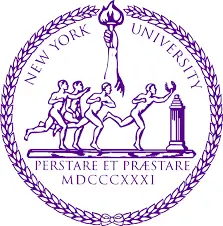

- Acceptance rate: 21%
- Average entry score: 1455 SAT or 33 ACT
- Student-to-faculty ratio: 8 to 1
- Estimated cost of attendance (tuition and fees): $80,878
- Average earning potential for graduates: $50,800 (College Simply)
NYU journalism’s training modes offered include traditional classroom instruction, hands-on experiential learning, and internships.
The programs emphasize the importance of multimedia storytelling and offer courses in video production, podcasting, data journalism, and more.
Students have access to state-of-the-art equipment and have the opportunity to work with award-winning faculty and industry professionals. Graduates go on to work in various areas of journalism, including print, broadcast, and digital media.
Source: NYU Journalism
Similar articles like this:
- 25 Best Schools For Business Management Studies In The US
- 25 Best Schools For Programming In The US
- 25 Best Commerce Schools In The US
#17. Boston University


- Acceptance rate: 20%
- Average entry score: 1310-1500 SAT
- Student-to-faculty ratio: 11 to 1
- Estimated cost of attendance (tuition and fees): $79,606
- Average earning potential for graduates: $44,900 (College Simply)
Boston University’s journalism and communication programs provide students with a broad-based education in the field, emphasizing practical skills such as writing, reporting, broadcasting, and multimedia production.
Students are encouraged to develop a strong foundation in critical thinking, research, and analysis, as well as the ability to collaborate effectively in a team.
The programs also prioritize hands-on experience, offering opportunities for students to work on real-world projects and build professional connections through internships, mentorships, and networking events.
Source: Boston University
#16. Emory University
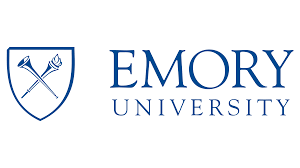

- Acceptance rate: 19%
- Average entry score: 1420-1540 SAT or 32-34 ACT
- Student-to-faculty ratio: 9 to 1
- Estimated cost of attendance (tuition and fees): $75,594
- Average earning potential for graduates: $32,500 (College Simply)
Emory University’s film, media, and communication courses cultivate versatile storytellers through hands-on experience, critical analysis, and diverse perspectives.
Students gain expertise in film production, screenwriting, media theory, and digital communication while developing strong analytical, problem-solving, and collaboration skills.
Graduates emerge as adaptive, creative professionals capable of thriving in the ever-evolving worlds of film, television, journalism, advertising, and public relations.
Source: Emory University
#15. Washington University in St. Louis
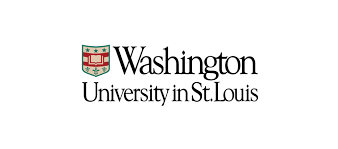

- Acceptance rate: 16%
- Average entry score: 1490-1570 SAT or 33-35 ACT
- Student-to-faculty ratio: 7 to 1
- Estimated cost of attendance (tuition and fees): $79,060
- Average earning potential for graduates: $66,650 (Grad Reports)
Washington University in St. Louis offers well-rounded journalism programs that provide students with a comprehensive education in communication.
The Communication degree program prepares students for careers across various industries by focusing on media, journalism, and public relations.
Students have access to modern resources, including a digital newsroom and broadcast studio. They can gain hands-on experience through internships and involvement in student media organizations.
Source: Washington University in St. Louis
#14. University of California Berkeley
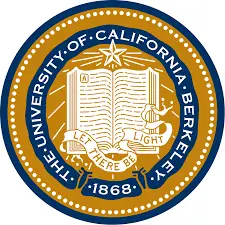

- Acceptance rate: 14%
- Average entry score: 1415 SAT
- Student-to-faculty ratio: 17 to 1
- Estimated cost of attendance (tuition and fees): $41,878-$71,632
- Average earning potential for graduates: $43,800 (College Simply)
UC Berkeley journalism programs bring together an interdisciplinary group of faculty and staff who are committed to the highest standards of excellence in journalism education.
Their mission is to train future journalists who can navigate today’s complex media landscape with creativity, innovation, and integrity.
Students leave the UC Berkeley journalism program with the skills to become knowledgeable, ethical, passionate journalists who are ready to make a difference in their communities and the world.
Source: UC Berkeley
Similar articles like this:
#13. University of California Los Angeles
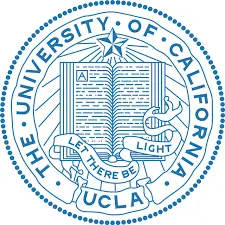

- Acceptance rate: 14%
- Average entry score: 1290-1520 SAT
- Student-to-faculty ratio: 18 to 1
- Estimated cost of attendance (tuition and fees): $16,847-$31,949
- Average earning potential for graduates: $23,100 (College Simply)
UCLA journalism programs blend classroom learning with hands-on experience and internships. You’ll learn to report, write and edit stories for print, broadcast, and online media.
As a top journalism program, the school has produced award-winning journalists who have gone on to cover some of the biggest news events in recent history.
Source: UCLA
#12. Carnegie Mellon University
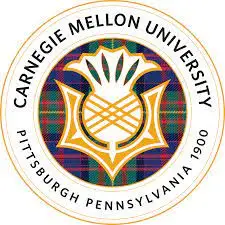

- Acceptance rate: 14%
- Average entry score: 1480-1560 SAT or 33-35 ACT
- Student-to-faculty ratio: 6 to 1
- Estimated cost of attendance (tuition and fees): $77,474
- Average earning potential for graduates: $33,200 (College Simply)
The journalism and media programs at Carnegie Mellon University aim to shape the next generation of journalists by providing them with a comprehensive curriculum that combines theory and practice.
Students are exposed to a wide range of topics such as ethics, media law, and investigative journalism. They are encouraged to apply what they learn in the classroom through hands-on experience.
Moreover, students are taught to use technology as a tool to enhance their reporting skills and storytelling abilities. By the end of the program, students are equipped with the skills and knowledge needed to succeed in the ever-changing media landscape.
Source: Carnegie Mellon University
What’s it like to study at Carnegie Mellon University?
#11. University of Southern California
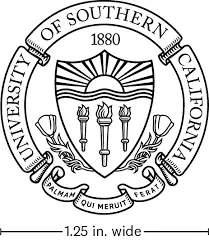

- Acceptance rate: 13%
- Average entry score: 1320-1520 SAT or 30-34 ACT
- Student-to-faculty ratio: 9 to 1
- Estimated cost of attendance (tuition and fees): $60,446
- Average earning potential for graduates: $60,400 (College Simply)
The USC journalism programs equip students with cutting-edge skills to craft compelling stories across print, digital, and broadcast media.
Graduates emerge as versatile storytellers, adept at producing investigative articles, multimedia packages, podcast episodes, and data-driven reports.
By nurturing creativity, fostering critical thinking, and emphasizing hands-on experience, USC’s programs empower the next generation of journalists to shape public discourse and drive social change with integrity and innovation.
Source: USC Annenberg
#10. Georgetown University


- Acceptance rate: 12%
- Average entry score: 1370 SAT or 29 ACT
- Student-to-faculty ratio: 11 to 1
- Estimated cost of attendance (tuition and fees): $82,505
- Average earning potential for graduates: $55,800 (College Simply)
Georgetown University’s journalism program nurtures aspiring journalists through a broad-based curriculum, combining theory and practice.
Students gain essential skills in news reporting, multimedia storytelling, and investigative techniques. They benefit from experienced faculty, industry connections, and Washington, D.C.’s dynamic news environment.
The program emphasizes ethics, critical thinking, and diverse perspectives, preparing graduates for successful careers in today’s evolving media landscape. Internship opportunities and hands-on experience further enhance students’ professional readiness.
Source: Georgetown University, College of Arts and Sciences
Similar articles like this:
- Best Schools For Geography Degrees
- 25 Best Business Administration Schools In The US
- Best Schools For Forensic Science
#9. Cornell University
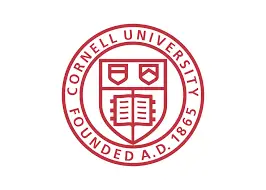

- Acceptance rate: 11%
- Average entry score: 1400-1560 SAT or 33-35 ACT
- Student-to-faculty ratio: 9 to 1
- Estimated cost of attendance (tuition and fees): $80,287
- Average earning potential for graduates: $47,100 (College Simply)
Cornell University’s journalism courses offer students a comprehensive and hands-on education in the field. With courses in reporting, editing, multimedia storytelling, and media law and ethics, students gain a well-rounded understanding of the industry.
The program also emphasizes critical thinking and analytical skills, preparing students to be innovative and adaptable in the ever-evolving media landscape.
Additionally, students have access to internships and networking opportunities, allowing them to gain real-world experience and make connections in the field.
Source: Cornell University
#8. Rice University
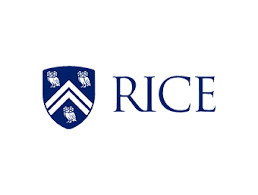

- Acceptance rate: 10%
- Average entry score: 1490-1570 SAT or 34-35 ACT
- Student-to-faculty ratio: 6 to 1
- Estimated cost of attendance (tuition and fees): $74,110
- Average earning potential for graduates: $25,900 (College Simply)
Rice University offers a variety of writing and communication programs to help students become more effective writers.
These programs provide students with the skills necessary for a range of careers in fields such as journalism, public relations, marketing, and technical writing.
Rice’s Career Development Center also offers career fairs and counseling resources to help students find job opportunities in these industries upon graduation.
Source: Rice University
What’s it like to study at Rice University?
#7. Northwestern University
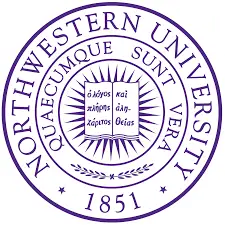

- Acceptance rate: 9%
- Average entry score: 1430-1550 SAT
- Student-to-faculty ratio: 6 to 1
- Estimated cost of attendance (tuition and fees): $62,391
- Average earning potential for graduates: $80,000 (College Simply)
Northwestern University’s prestigious journalism programs attract ambitious students, fostering a rich learning environment.
With renowned faculty guiding their growth, students master multimedia storytelling, data journalism, and investigative reporting.
The Medill School of Journalism, a cornerstone of this institution, boasts a vast network of successful alumni.
Collectively, Northwestern’s community shapes the future of journalism, upholding the highest standards of integrity and excellence.
Source: Northwestern Medill
#6. Vanderbilt University


- Acceptance rate: 7%
- Average entry score: 1480-1570 SAT or 34-35 ACT
- Student-to-faculty ratio: 79,558
- Estimated cost of attendance (tuition and fees): $
- Average earning potential for graduates: $56,300 (College Simply)
Vanderbilt University’s communication programs prepare students to become skilled journalists through a combination of rigorous coursework and hands-on experience.
Students can also take advantage of numerous opportunities to gain real-world experience, including internships with major news organizations and the student-run Vanderbilt Hustler newspaper.
Through these programs, Vanderbilt produces talented journalists who are well-equipped to succeed in the rapidly-evolving media landscape.
Source: Department of Communication Studies
Similar articles like this:
- 25 Best Schools For Insurance Degrees In The US
- Best Schools For International Relations
- 25 Best Digital Marketing Schools In The US
#5. Columbia University


- Acceptance rate: 7%
- Average entry score: 1440-1570 SAT or 34-35 ACT
- Student-to-faculty ratio: 6 to 1
- Estimated cost of attendance (tuition and fees): $85,000
- Average earning potential for graduates: $43,800 (College Simply)
Columbia University’s prestigious Journalism School shapes the future of journalism by instilling essential skills, ethics, and adaptability.
Students engage in hands-on learning through workshops, internships, and mentorship from industry leaders. Emphasizing storytelling across diverse platforms, they master multimedia reporting and investigative techniques.
Aspiring journalists graduate with a strong foundation in traditional journalism values while embracing innovation and technology to tackle modern challenges and uphold the integrity of the profession.
Source: Columbia Journalism School
What’s it like to study at Columbia University?
#4. Brown University
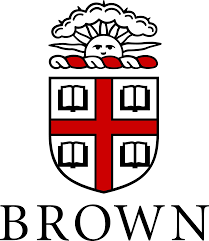

- Acceptance rate: 6%
- Average entry score: 1460-1570 SAT or 33-35 ACT
- Student-to-faculty ratio: 6 to 1
- Estimated cost of attendance (tuition and fees): $84,986
- Average earning potential for graduates: $21,400 (College Simply)
The journalism and mass media programs at Brown University aim to provide students with a comprehensive understanding of the media industry, including its history, ethics, and impact on society.
Students can choose from a variety of courses, including media analysis, documentary filmmaking, and digital media production. Their faculty consists of experienced professionals and scholars who bring a wealth of knowledge and expertise to the classroom.
Students are also encouraged to participate in internships and other experiential learning opportunities to gain real-world experience in the field.
Source: Department of Modern Culture and Media
#3. Princeton University
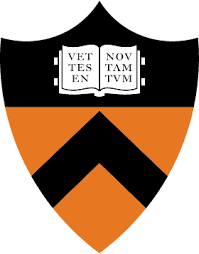

- Acceptance rate: 6%
- Average entry score: 1570 SAT or 35 ACT
- Student-to-faculty ratio: 5 to 1
- Estimated cost of attendance (tuition and fees): $78,490
- Average earning potential for graduates: $51,270 (Grad Reports)
Princeton University’s journalism program provides a unique learning environment that emphasizes the importance of hands-on experience and individualized instruction.
The program is designed to provide students with a comprehensive understanding of the challenges and opportunities facing journalists in today’s rapidly evolving media landscape.
Students have access to state-of-the-art facilities and equipment, as well as opportunities to work alongside experienced journalists and media professionals.
Source: Princeton University
#2. Harvard University


- Acceptance rate: 5%
- Average entry score: 1460-1580 SAT or 33-35 ACT
- Student-to-faculty ratio: 7 to 1
- Estimated cost of attendance (tuition and fees): $76,963
- Average earning potential for graduates: $37,300 (College Simply)
Harvard’s Journalism program boasts a prestigious reputation, attracting top talent and fostering a thriving intellectual environment.
With access to unparalleled resources, including expert faculty, cutting-edge technology, and extensive research archives, students are well-equipped for success.
Impressive job prospects await graduates, who often land positions at leading media organizations. This ensures a bright future for those who complete this esteemed program at one of the world’s most respected institutions.
Source: Harvard University
#1. Stanford University


- Acceptance rate: 4%
- Average entry score: 1470-1570 SAT or 34-35 ACT
- Student-to-faculty ratio: 5 to 1
- Estimated cost of attendance (tuition and fees): $78,898
- Average earning potential for graduates: $52,848 (College Factual)
Stanford Journalism programs cultivate skilled storytellers, adept at navigating today’s digital landscape.
Combining rigorous academics with hands-on experience, graduates emerge as proficient multimedia journalists, expertly utilizing data-driven reporting, cutting-edge technology, and compelling narratives.
This holistic approach empowers alumni to create high-impact, fact-based stories that inform, engage, and inspire global audiences, ultimately shaping public discourse and driving change across various industries.
Source: Stanford Journalism Program
Conclusion
The top journalism schools equip aspiring journalists with essential skills for success. Pursue your passion at one of these renowned institutions, and watch your career soar.
Ready to embark on this exciting journey? Explore our comprehensive guide and take the first step toward your dream profession today.
Selection Criteria
Here is a list of the factors we considered when selecting the best journalism schools:
Please note that the order in this list might vary by ranking criteria and sources.
- Reputation and ranking of the school: We looked for schools that have a strong reputation and high ranking in the field of journalism.
- Faculty expertise, qualifications, and specialization: We researched the faculty members and their areas of expertise and qualifications to ensure that the school has professors with relevant expertise and specialization in the areas of journalism that are of interest.
- Curriculum and resources: We evaluated the curriculum to ensure it aligns with students’ interests and career goals and considered the quality of the school’s facilities and resources, such as labs, equipment, and libraries.
- Opportunities for hands-on learning and research: We looked for schools that provide opportunities for hands-on experience through internships, co-op programs, or fieldwork.
- Student support services and alumni network: We considered the availability of support services and the strength of the alumni network in providing mentorship, internships, and job opportunities after graduation.
- Extracurricular activities and diversity: We evaluated the availability of extracurricular activities and clubs that align with students’ interests and considered the school’s diversity and inclusivity.
- Networking and post-graduation support: We researched the school’s network of alumni and their post-graduation support for journalism students and also considered if the schools have a strong network of industry professionals and researchers in journalism.
Frequently Asked Questions
Q1. What is a journalism school?
Journalism schools are higher education institutions that teach students how to report and write stories for newspapers, magazines, and websites.
Q2. How do I choose a journalism school?
There are many factors to consider when choosing a journalism school.
You should think about what type of program you want to study (broadcast, print, or digital), where you want to live, and whether there are any scholarships available at the schools you’re considering.
Q3. How do I get into a top journalism school?
The most important thing is to have a passion for journalism and be able to demonstrate that passion in your application.
You should also have a strong academic record. Most journalism schools place a high value on your GPA and SAT/ACT scores.
If you’re planning to apply for financial aid, keep in mind that many journalism programs offer scholarships based on merit and need.
Q4. What are the best journalism schools in the US?
While the answer to this question can vary depending on whom you ask and what they’re looking for, there are some schools that stand out as the best journalism schools in the US.
These schools offer a variety of programs—from undergraduate degrees to graduate programs—that will prepare you for a career in this field.
They include:
- Stanford University
- Princeton University
- Harvard University
- Northwestern University
Q5. What are the job opportunities for a journalist?
Journalism is a wide-ranging field, with job opportunities available in newsrooms, online publishing, and social media.
Here are some examples of journalism jobs:
Editor: This is the person who oversees all of the content for a publication or website. They make sure that stories are accurate and compelling, and they decide what gets published and when.
Reporter: Reporters gather information from various sources to write news stories about current events.
Photojournalist: uses a camera to capture images of people, places, and events. They may publish their own photos or ones taken by others.
Cartoonist: use humor to make a point about current events. They create comic strips that are published in newspapers or online.
References
[1] Official Websites
[2] Salary Data from Glassdoor, Grad Reports, College Factual, College Simply, Zippia
[3] Ranking references, including news media such as Colleges Offering a Journalism Major


